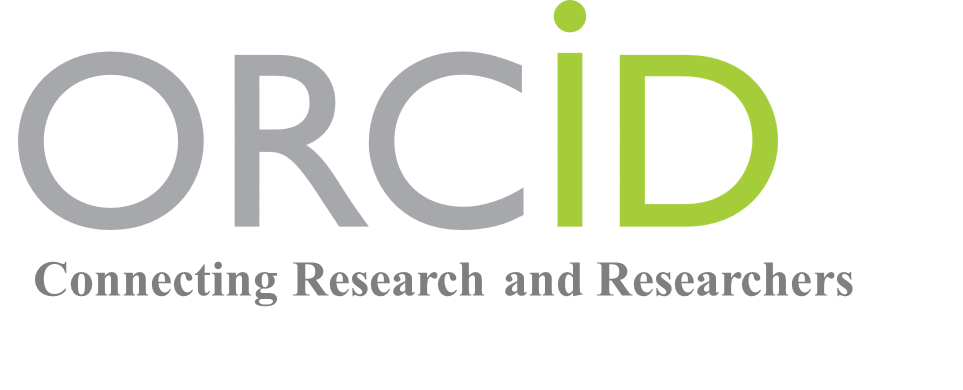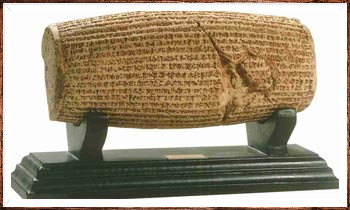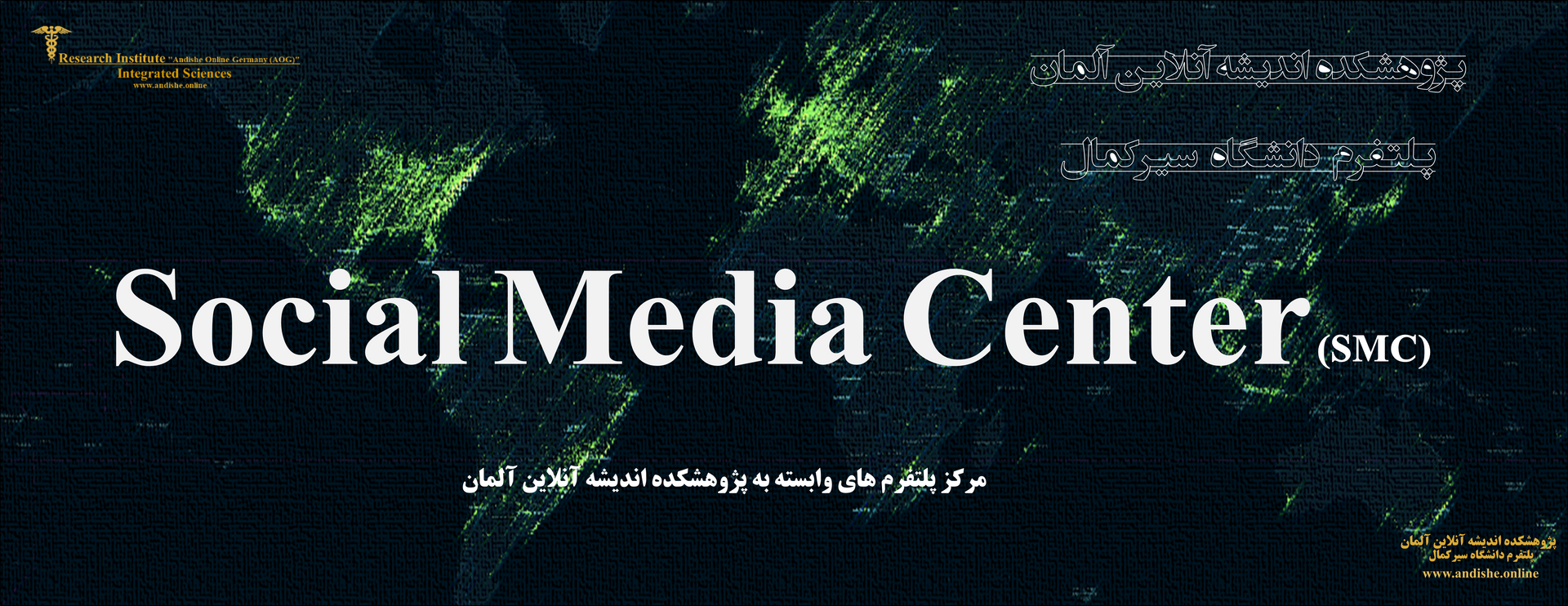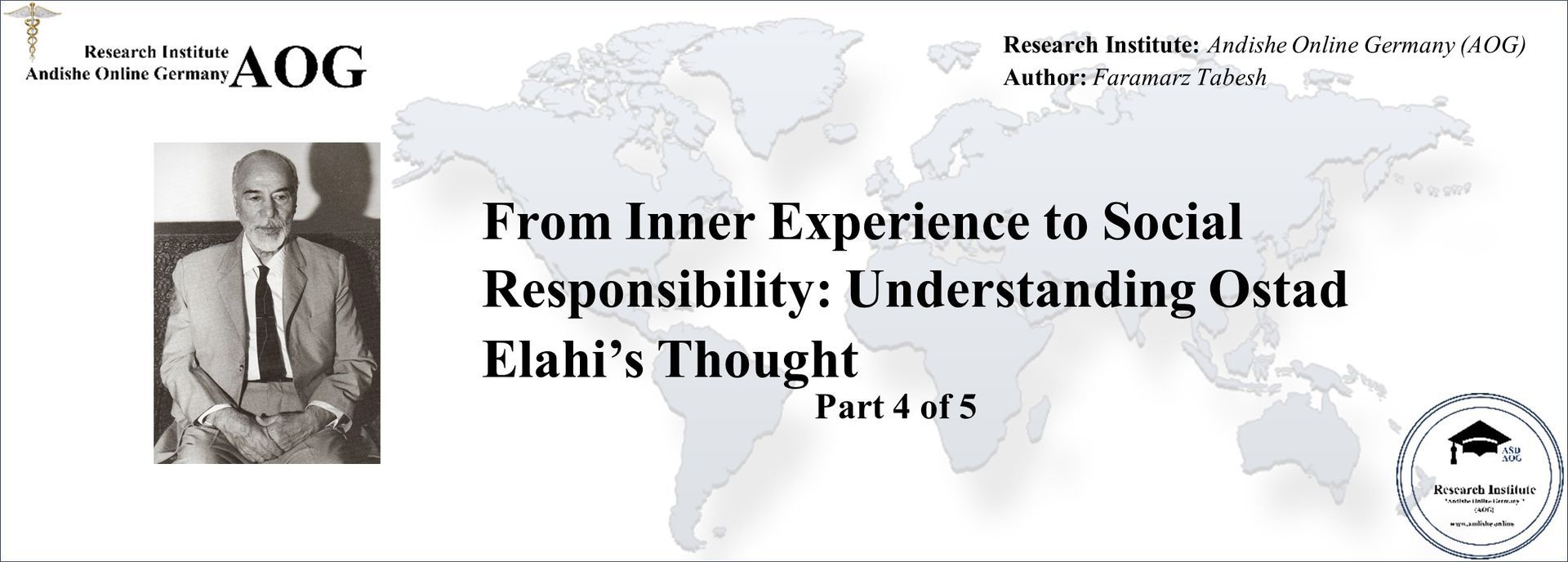

Paper Information
Research Institute: Andishe Online Germany (AOG)
Author: Faramarz Tabesh
This research is presented in five parts (Part I to Part V) and is available in English, German, Persian, French, Spanish, and Arabic.
Section: Excerpt from "Biography"
Subject Area: Interdisciplinary Research – Human Consciousness, Transpersonal Psychology, and Spiritual Development
Original Language: Persian (Farsi)
Persian Version (Part 4) – Release Date : Edition 19 / 2018
English Version – Initial Release: Edition 31 / 2020
English Version – Revised on: May 20, 2025
Translation: Translated into English and German by the author
Archival Code: fd,ävhtd_löhkdö ö,hkjl_tdcdö bvhj_jtövhj ljhtdcdö_hkägdsd
Part 4 of 5
-Quantum mechanics
-Elementary particle physics
-The metaphysical thoughts
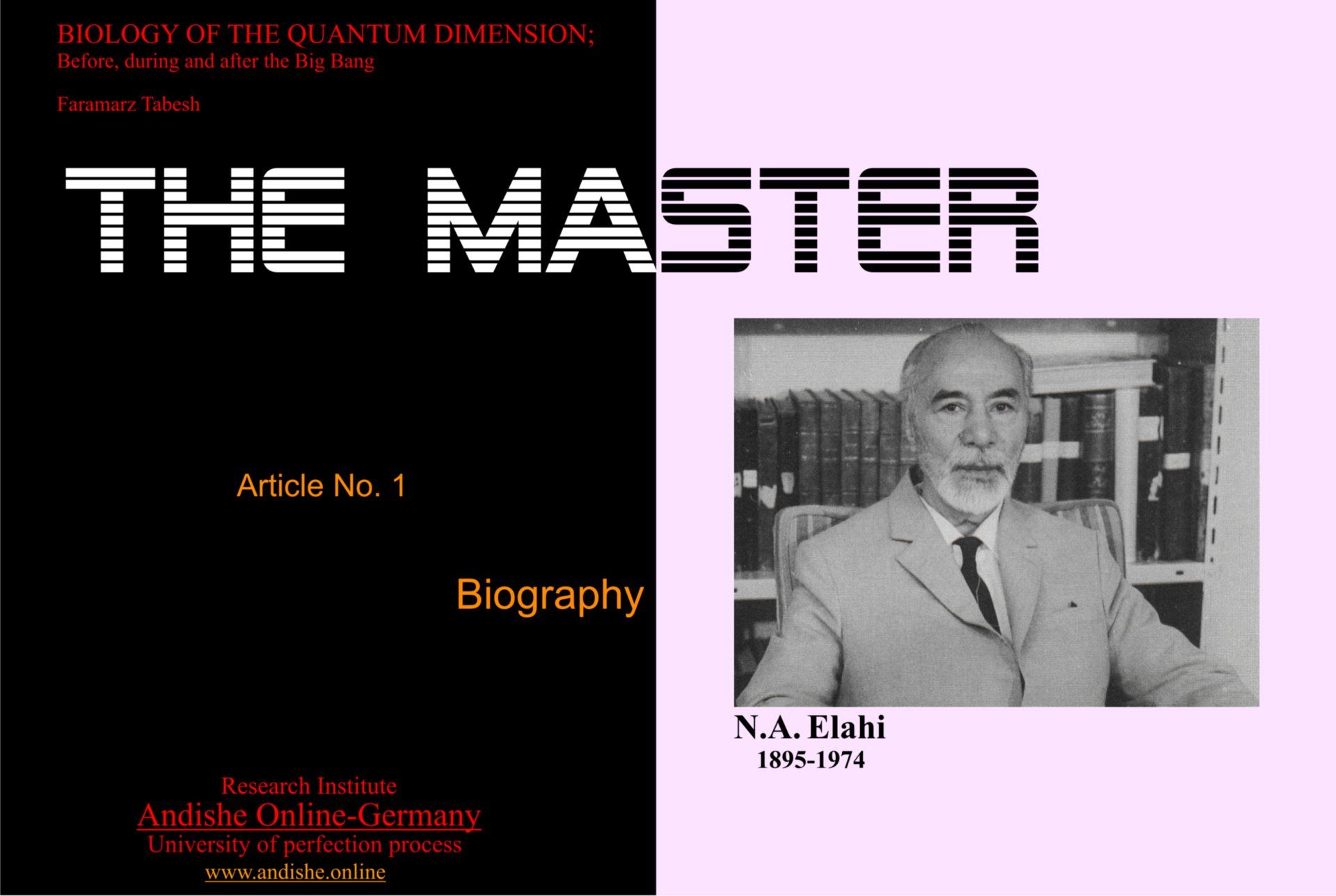
Part No.1
Biography of Ostad Elahi
Part No.2
The divine discoveries
Part No.3
Philosophers and scientists in search of truth
Part No.4
Quantum mechanics
Elementary particle physics
The metaphysical thoughts
Part No.5
Ostad Elahi solved the riddle
..................................................
Integrated sciences
Article No.6
3 quantum dimension of matter
3.1 Tokyo experiment
Quantum Mechanics
At the end of the 19th century, quantum mechanics began to develop gradually. Many mathematicians and physicists noticed that the principles of classical physics were insufficient for explaining atomic particle behavior—such as electron movement and the interactions between protons and their respective functions. It is believed that the field of quantum mechanics originated with
Max Planck’s1 radiation law and his introduction of the term
“quantum.”
Although Erwin Schrödinger later developed newer, more productive forms of atomic theory that were vital to the emergence of this science, Werner Heisenberg2 is considered the true founder of quantum mechanics. In 1932, he was awarded the Nobel Prize in Physics for the creation of quantum mechanics, which included his formulation of the uncertainty principle and significantly contributed to the understanding of hydrogen’s allotropic forms.
Albert Einstein3 explained the photoelectric effect through his light quantum hypothesis in 1905. Niels Bohr4 formulated the atomic model in 1918, thereby superseding Rutherford’s5 model. In 1925, matrix mechanics were formulated by Max Born6, Pascual Jordan7, and, of course, Heisenberg. Shortly afterward, Erwin Schrödinger8 established the equation that bears his name, which differed significantly from De Broglie’s theory9 of matter waves. A few months later, Schrödinger demonstrated that wave mechanics were mathematically equivalent to matrix mechanics. In 1926, John Hasbrouck Van Vleck10 published Quantum Principles and Line Spectra, the first book on the new quantum mechanics, helping consolidate this science—originally derived from classical physics—into a unified framework.
These developments led to a radically different understanding of atomic shells and particle dynamics. New equations and theories emerged, becoming increasingly complex and even causing disputes among notable scientists. The most famous of these debates occurred between Einstein and Max Born. Einstein believed that quantum physicists of the time were drifting toward idealism. A quote from him is:
“Quantum mechanics is very respectful. But an inner voice tells me that it is not yet true Jacob11. The theory delivers a lot, but it hardly brings us closer to the mystery of the old one (God). In any case I am convinced that he (God) does not roll the dice.” 12 (Einstein)
Although quantum mechanics has never answered fundamental questions about the origin of the universe, it laid the foundation for modern technology.
In addition, quantum mechanics opened the door to a realm where phenomena occur in ways that differ profoundly from the world as we perceive it. Although the theory was not yet the "real Jakob," it seems that all of these efforts have gradually moved in the right direction. These scientific developments enabled thinkers like Heisenberg, Bohr, and others to break away from the classical Descartes–Newton worldview and adopt a more open and dynamic perspective on scientific phenomena.
This shift is reflected in semi-popular scientific literature, which focuses particularly on the philosophical aspects of the theory. This, in my view, marks a significant and positive revolution in scientific thinking—encouraging scholars to examine phenomena from multiple perspectives rather than relying on unilateral interpretations.
Famous experiments such as Schrödinger’s cat13 and the tunnel effect14 illustrate how the Descartes–Newton era has given way to a modern framework—a “quantum mentality”—that challenges or redefines some classical laws of mechanics. For instance, Einstein’s theory of relativity revealed that Newtonian mechanics apply only in specific cases. Two other key examples are the discovery of the allotropic forms15 of hydrogen and superconductors16, both of which can only be explained using principles of quantum mechanics.
Elementary Particle Physics
Influenced indirectly by quantum mechanics, particle physics emerged in the early 20th century. This field focuses on observing elementary particles, describing their properties, establishing inter-particle relationships, and explaining the fundamental forces within atomic nuclei. Essentially, elementary particle physics has significantly advanced our understanding of matter by identifying some of its fundamental building blocks. This is a dynamic realm—where everything is in constant motion and transformation.
A proper and comprehensive interpretation of particle physics principles has led scientists to hope that the immaterial dimension of matter may be explained scientifically. This offers a clearer conceptualization of how the principles of another dimension—often referred to as the afterlife—might operate.
Nonetheless, based on the current state of the field, it must be acknowledged that particle physics alone cannot explain the origin of the universe. Moreover, it has yet to unify the four fundamental forces. Equations with infinite initial values introduce complications across all scientific domains, leading to doubts about the accuracy of certain calculations.
The Metaphysical Thoughts
Thales and other religious philosophers believed that existence is filled with divinity, but they were not required to provide scientific evidence for their ideas. Furthermore, such brief yet meaningful statements cannot adequately describe or explain the origin of the universe and existence.
Centuries after Thales, with the emergence of quantum mechanics and the study of cosmic rays in connection with elementary particle observations, it was hypothesized that every millimeter of the universe is filled with particles and antiparticles. This scientific thesis, in essence, echoes what Thales claimed over 2,500 years ago. Thus, the search for the key to truth must continue elsewhere.
The fact remains: Various branches of natural sciences have yet to provide a comprehensive explanation for the origin of existence, even though theories like the Big Bang can be hypothetically supported. No scientific framework has yet fully theorized how electrons, positrons, and matter itself came into being, despite significant progress in matter analysis.
The fundamental reason is that no one has been able to explain the immaterial dimension—with all its complexities—in a manner that is complete, consistent, rational, and free from superstition17, paradoxes18, or contradictions.
Occasionally, we encounter articles in the media about metaphysics—many of which, inspired by Eastern spirituality and particularly the Indian Vedas19, touch upon ethical teachings or meditation techniques. Some explore mystical interpretations of concepts like time, cosmos, and space. While such approaches may be partially useful, they are often selective, presenting fragmented definitions that fail to capture the totality of existence and its interrelated dimensions and entities.
A reasonable discussion of human existence requires a specific, reliable source of knowledge that elucidates the fundamental structure and original design of existence.
End of Article 4 of 5

Faramarz Tabesh
Archiving Code for This Part: fd,ävhtd_löhkdö ö,hkjl_tdcdö bvhj_jtövhj ljhtdcdö_hkägdsd
Part 5 of 5: Ostad Elahi solved the riddle
References:
1. Planck, M. (1901). On the law of distribution of energy in the normal spectrum. Annalen der Physik, 4(553).
2. The Nobel Prize in Physics 1932 – Werner Heisenberg. (n.d.). NobelPrize.org. https://www.nobelprize.org/prizes/physics/1932/heisenberg/facts/
3. Einstein, A. (1905). On a heuristic viewpoint concerning the production and transformation of light. Annalen der Physik, 17, 132-148.
4. Bohr, N. (1913). On the constitution of atoms and molecules. Philosophical Magazine, 26(153), 1-25.
5. Rutherford, E. (1911). The scattering of alpha and beta particles by matter and the structure of the atom. Philosophical Magazine, 21(125), 669-688.
6. Born, M., Heisenberg, W., & Jordan, P. (1925). Zur Quantenmechanik II. Zeitschrift für Physik, 35(8-9), 557–615.
7. Jordan, P., & Wigner, E. (1927). Über das Paulische Äquivalenzverbot. Zeitschrift für Physik, 47(9-10), 631–651.
8. Schrödinger, E. (1926). Quantisierung als Eigenwertproblem. Annalen der Physik, 79(4), 361-376.
9. de Broglie, L. (1924). Recherches sur la théorie des quanta [Research on the theory of the quanta] (Doctoral dissertation, University of Paris).
10. Van Vleck, J. H. (1926). Quantum principles and line spectra. Harvard University Press. Bulletin of the National Research Council.
11. «the real thing»
12. Einstein, A. (1947(1926)). Letter to Max Born, December 4. In Born, M. (Ed.), The Born-Einstein Letters, 1926-1955. Walker and Company.
13. Schrödinger, E. (1935). Die gegenwärtige Situation in der Quantenmechanik. Naturwissenschaften, 23, 807-812. Schrödinger, E. (1935). "The Present Situation in Quantum Mechanics." Naturwissenschaften, 23(48-50), 807-812, 823-828, 844-849.ccess: Available via SpringerLink or JSTOR.
14. Gamow, G. (1928). Zur Quantentheorie des Atomkernes. Zeitschrift für Physik, 51(3), 204-212.
15. "Chemistry: The Central Science" ,Theodore E. Brown, H. Eugene LeMay, Bruce E. Bursten, et al. Publisher: Pearson, 14th Edition, 2017 .Description: This authoritative chemistry textbook includes sections on allotropy (different forms of an element in the same physical state, e.g., carbon: graphite, diamond, fullerenes). Cooper, L. N., & Schrieffer, J. R. (1957). Theory of superconductivity. Physical Review, 108(5), 1175-1204.
16. See reference 15
17. Episode 1: https://www.andishe2.online/en-philosophy--superstition--an-inexplicable-concept. Episode 2: https://www.andishe2.online/en-philosophy--superstition--an-inexplicable-concept--episode-2
18. Paradoxes in the Philosophy of Science.Thomas S. Kuhn (reference to his work on scientific revolutions and paradoxes). Included in The Structure of Scientific Revolutions, University of Chicago Press, 3rd Edition, 1996
19. Radhakrishnan, S., & Moore, C. A. (1957). A sourcebook in Indian philosophy. Princeton University Press.
Audio format article for the visually impaired (V1)
"V2 is not available."

